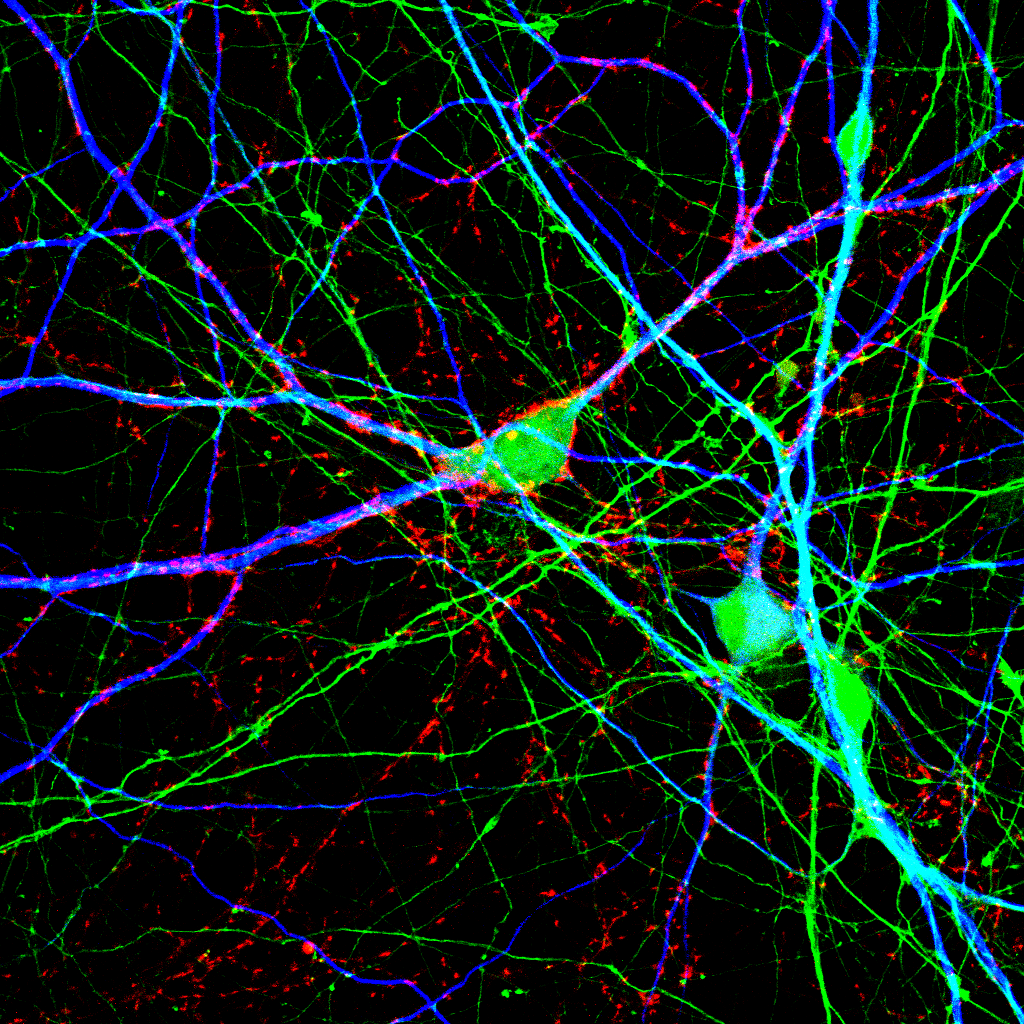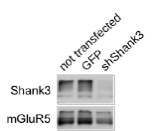Verpelli Chiara
- Dettagli
- Visite: 13944
 Research scientist
Research scientist
c/o Università di Milano - Bicocca
Via Raoul Follereau, 3
20854 Vedano al Lambro
(MB)
Questo indirizzo email è protetto dagli spambots. È necessario abilitare JavaScript per vederlo.
tel. 02 64488372
Physiological and pathological mechanisms of synaptic development
Research summary
Haploinsufficiency, duplication and mutations of the SHANK3 gene are associated with intellectual disabilities (IDs), including autism spectrum disorders (ASD). Major neurological sintoms of the 22q13 deletion syndrome, also called Phelan-McDermid syndrome (PMS) are indeed caused by SHANK3 deletion and haploinsufficiency. The syndrome is characterized by expressive language delay, intellectual disability, hypotonia, minor craniofacial dysmorphisms, increased tolerance to pain, relatively large hands and normal to advanced growth and autistic features are often observed.
The SHANK3/PROSAP2 gene encodes for one of the central scaffolding proteins of the post-synaptic density (PSD) at glutamatergic synapses. In particular it has been shown that Shank3 proteins molecularly link two glutamate receptor subtypes: NMDA receptors and group-I metabotropic GluRs (mGluRs). Indeed the PDZ domain of Shank3 binds to the C-terminal of GKAP and therefore the PSD95/NMDA complex, while its proline-rich domain binds to Homer and ensures the association of Shank with group-I mGluRs. We recently showed that SHANK3 knock down in hippocampal cells induces mGluR5 signaling impairment (Verpelli et al., 2011; Verpelli and Sala, 2011).
Our laboratory is interested in the characterization of the role of SHANK3 in synaptic function using morphological and biochemical techniques in primary neuronal culture, in a mouse model of SHANK3 haploinsufficiency and in neurons derived by iPS cells differentiation obtained by patients affected by Phelan-McDermid syndrome (PMS) syndrome.



Representative publications
Vicidomini C, Ponzoni L, Lim D, Schmeisser MJ, Reim D, Morello N,Orellana D, Tozzi A, V Durante V, Scalmani P, Mantegazza M, Genazzani AA, Giustetto M, Sala M, Calabresi P, Boeckers TM, Sala C and Verpelli C. Pharmacological enhancement of mGlu5 receptors rescues behavioral deficits in SHANK3 knock-out mice. Mol Psychiatry. 2016 Mar 29. doi: 10.1038/mp.2016.30.
Yuan T, Mameli M, O' Connor E , Dey PN, Verpelli C, Sala C, Perez-Otano I,uscher C, Bellone C. (2013)
Expression of Cocaine-Evoked Synaptic Plasticity by GluN3A-Containing NMDA Receptors. Neuron. 2013 Oct 30. pii: S0896-6273(13)00709-5. doi: 10.1016/j.neuron.2013.07.050.
Verpelli C, Carlessi L, Bechi G, Fusar Poli E, Orellana D, Heise C, Franceschetti S, Mantegazza R, Mantegazza M, Delia D, Sala C. (2013)
Comparative neuronal differentiation of self-renewing neural progenitor cell lines obtained from human induced pluripotent stem cells. Front Cell Neurosci. 2013 Oct 7;7:175. doi: 10.3389/fncel.2013.00175.
Mameza MG, Dvoretskova E, Bamann M, Hönck HH, Güler T, Boeckers TM, Schoen M, Verpelli C, Sala C, Barsukov I, Dityatev A, Kreienkamp HJ. (2013)
SHANK3 gene mutations associated with autism facilitate ligand binding to the Shank3 ankyrin repeat region. J Biol Chem. 2013 Sep 13;288(37):26697-708. doi: 10.1074/jbc.M112.424747. Epub 2013 Jul 29.
Verpelli C, Sala C (2012)
Molecular and synaptic defects in intellectual disability syndromes. Curr Opin Neurobiol. 22(3):530-6.
Verpelli C, Dvoretskova E, Vicidomini C, Rossi F, Chiappalone M, Schoen M, Di Stefano B, Mantegazza R, Broccoli V, Böckers TM, Dityatev A, Sala C. (2011)
Importance of Shank3 protein in regulating metabotropic glutamate receptor 5 (mGluR5) expression and signaling at synapses. J Biol Chem. 2011Oct 7;286(40):34839-50. doi: 10.1074/jbc.M111.258384. Epub 2011 Jul 27.











